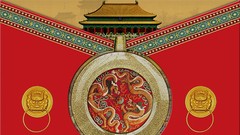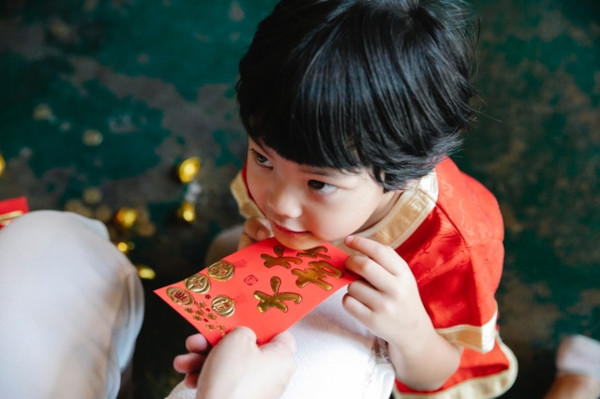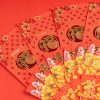
The Spring Festival, also known to most people as the Chinese New Year or Lunar New Year, is the most famous and the most important of all other festivals in Chinese culture.
Chinese culture, as well as some other Asian cultures like Japanese and Korean, uses the Lunar Calendar rather than our standard Gregorian Calendar. The Lunar Calendar only has 354 days instead of the standard 365 days we have in our Gregorian calendar. As a result of this difference, the Chinese New Year doesn’t happen on the 1st of January every year, but on the first day of the first month of the Lunar calendar, which falls on a different Gregorian date every year, but always between January 21st and February 20th.
Since the Spring Festival is considered the most important out of all the other Chinese festivals, it involves a lot of preparations, and the festival itself lasts not only one or two days, but 15 days in total. Not only that, but on the 15th day after the Chinese New Year, we’ll celebrate another important festival that is the Lantern Festival.
To learn further about the importance of the Spring Festival and how it is celebrated, let us first discuss the history and legends behind the celebration of the Chinese New year itself, which will help us understand why the festival is very important for the Chinese culture and also various Asian cultures all over the world.
History Behind The Spring Festival
The Chinese New Year and Spring Festival have a very long history that can be traced back 3,500 years into the past.
The actual beginnings of the Chinese New Year tradition were not recorded clearly. However, many historians believe that the tradition began during the times of the Shang Dynasty (1600-1046 BC). In this period, China was an agrarian culture, and the Chinese culture back then was heavily influenced by mysticism and spirituality.
In this period, the Chinese New Year was not celebrated as an actual festival, but simply as worship for their gods asking for abundant harvest and blessings. So, during these rituals, it’s common for them to give many offerings like foods, yields from their harvests, or even animal sacrifice.
Entering the period of the Zhou Dynasty (1046-256 BC), in this period the Chinese began to understand the concept and term of “year”, so they began to create a primitive calendar system. Along with advancements in knowledge and technology, their worship rituals for their gods also evolve. People started to build complex shrines for their gods with the hope of gaining more blessings and better lives.
During the period of the Han Dynasty (202 BC – 220 AD), the Spring Festival was widely celebrated by most people, even commoners, and it is during this time that it was established that the Spring Festival marks the start of a new year.

The Spring Festival was now celebrated as a nationwide event, and the Imperial Palace also organizes magnificent events like parades and carnivals. Civilian workers were also mandated to go back to their homes and celebrate this festival with their families, and during this period, activities like burning bamboo shots (the origin of firecrackers) are also introduced.
In the periods of the Wei and Jin Dynasties (220-420 AD), the festival gained even more popularity and the meaning behind the celebration has evolved from simply a worship ritual for the gods and ancestors into major entertainment sought after by commoners every year. During this time, the tradition of cleaning the house, replacing appliances with new ones, and partying until late into the night became inseparable parts of the festival.
The Tang Dynasty period (618-907 AD) allows a change of paradigm in the Spring Festival celebration and the main function of the festival has also shifted. The festival was no longer perceived as a sacred ritual for the gods—which was the norm established for thousands of years—, and now the New Year was celebrated mainly as entertainment for both nobles and commoners. Vacation with family became a must-do tradition, and families used this festival as a family reunion for the whole family.
The Song Dynasty (960-1279 AD) marked the invention of gunpowder, which also allowed the invention of firecrackers. It was during this time that the tradition of lighting up firecrackers became a must-have activity during the Spring Festival.
Last but not least, the Qing Dynasty (1644-1911 AD) established the modern Spring Festival traditions we know today. As we can see, the activities and traditions have evolved gradually since the times of the Shang Dynasty, but it was the Qing Dynasty period that brought the modernizations.
Traditions like celebrating the festival with the whole family, giving presents and red envelopes to younger members of the family, Dragon Dance, and Lion Dance were established as inseparable activities from the Festival.
Online Courses about Chinese Culture from Udemy (Aff.link)

Legend and Folklore Behind The Chinese New Year
Just like the other Chinese festivals, there are many different legends and traditions behind the Chinese New Year festival. However, one of the most popular and widely known folklore for the Spring Festival is one about the mystical monster named Nian.
The legend said that Nian always appears on the night of Lunar New Year’s eve. Nian always brought trouble to the people of the land: eating cattle, destroying crops, and even eating humans.
One day, an immortal hermit prophesied that Nian was actually afraid of the color red, and it was also afraid of loud noises coming from firecrackers. Hearing this, the people then prepared themselves to drive away Nian.
They began wearing various red-colored accessories, red clothing, red paper charms, red lanterns and even painted their houses with the color red. They also prepared firecrackers to scare the Nian away. Long story short, after they do all these things, Nian stopped attacking the village, and thus the people can then live in peace.
This folklore became the basis of various traditions and activities performed during the Spring Festival. This is why people wore red clothing and accessories to celebrate the Chinese New Year, as well as lighting up firecrackers and red lanterns and other traditions we’ll discuss below.
Activities and Traditions In Celebrating the Spring Festival
Even in today’s modern era, various traditions and activities are still performed by many Chinese people in celebrating the Spring Festival:
Festival Preparations
Since the Chinese New Year is the most important of all the Chinese festivals, there are quite a number of preparation activities performed each year, not unlike how we prepare for Christmas in Western countries. Here are some of the important preparation activities:
- Cleaning the house
Before the Chinese New Year, Chinese people often involve the whole family to clean their houses. They believe that cleaning the house and throwing away old and broken things are a ritual of welcoming blessings and new things. They also believe that replacing old furniture pieces with new ones is a way of inviting fortune and good luck for their home.
- Buying tools and equipment
An important preparation ritual of the Spring Festival is to buy things like Hong Bao (red envelopes), new clothing (especially those with red colors), firecrackers, lanterns, paper charms, snacks, and so on.
- Decorating the house
Another important preparation is to decorate the house with all the Spring Festival decorations and accessories: red lanterns, red paper charms, pictures, and so on. This is believed to be a ritual of inviting good fortune to the house to fill the house with luck energy.

Spring Festival as Family Reunion
The Spring Festival today has a very important function of family reunion. It’s considered mandatory for family members even if they live in different cities and countries to come back home to their parent’s house during the Chinese New Year.
During this reunion, a family dinner is a must, and they often share a year’s worth of stories at the dinner table. Here are some important activities performed during the family reunion:
- Eating dumplings
Dumpling is a must-have dish during the Spring Festival, symbolizing reunion, harmony, and also wealth fortune.
- Staying up at night and lighting up firecrackers
An important tradition that is still held by many families in China is to stay up together (until at least midnight) then light up firecrackers right at midnight. As discussed, the legends and folklore told stories of how firecrackers can drive away demons and bad luck, but many modern Chinese simply performed this tradition as entertainment while wishing for a new year full of blessings.
- Red envelopes
During the family reunion, children and those who aren’t yet married will get red envelopes from other family members. The red envelope is a symbol of good luck, so presenting the red envelope symbolizes the elders’ wishes so the youngsters will be blessed by health, wealth, career success, and also success in romance.
- Dragon Dance and Lion Dance
Another important tradition is to watch Lion Dance and Dragon Dance during the festival period, and these dances symbolize fortune, nobility, and bravery. These dances also contribute to the overall majestic theme of the festival and are still important entertainments even in this modern era.
Related reading: “Chinese Good Luck Charms To Bring Good Fortune” –Opens in new tab
Stay in Touch
 Join our newsletter by using the forms on this website or click here!
Join our newsletter by using the forms on this website or click here! Follow us on Google News
Follow us on Google News Follow us on Facebook
Follow us on Facebook
Featured Photo by Angela Roma from Pexels





